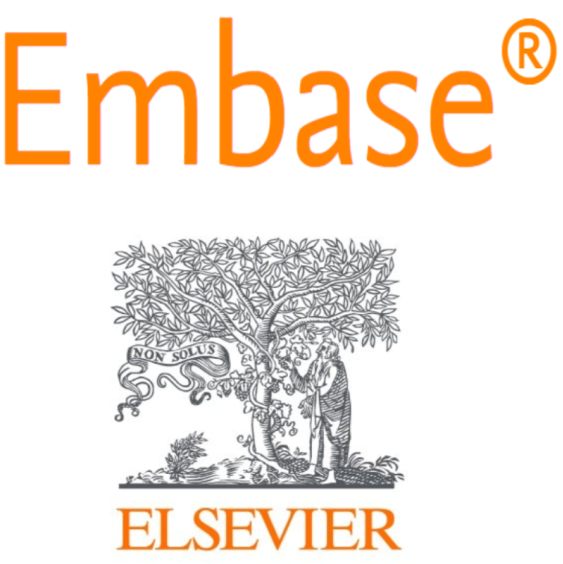Validity and reliability of the Dari version of the CES-D scale among the general population of Herat, Afghanistan: A methodological study
DOI:
https://doi.org/10.56101/rimj.v2i1.35Keywords:
CES-D Scale, Depression, Validity, Reliability, Cultural Adaptation, Herat-AfghanistanAbstract
Background: Depression is considered one of the significant pressing public health problems globally. The Center for Epidemiologic Studies Depression (CES-D) scale is valuable for assessing subthreshold depression. The purpose of this study was to investigate various aspects of the CES-D scale's validity and reliability in the Afghan population.
Method: This methodological study was conducted between 6th June 2021 and 12th July 2021 among the general population in the Herat province of Afghanistan. A total of 424 participants filled out the questionnaires provided to them. The forward-backward translation method translated the CES-D scale into the Dari language. The data was statistically analyzed using IBM SPSS version 24.0 and AMOS version 24.0 software for Windows. Exploratory (EFA) and confirmatory factor analysis were used to assess the factor structure (CFA). The reliability was assessed by Cronbach’s alpha, inter-item correlation, and total item correlation.
Result: The exploratory factor analysis resulted in three factors (Depressed affect & Somatic complaints factor, the Interpersonal factor, and the Positive affect factor). The CFA result suggested that the resulted model of the Dari version of the CES-D scale with 19 items was the best fit for our data. The Cronbach’s alpha for the 19 items scale was 0.874.
Conclusion: The results of this study show that the Dari version of the CES-D scale is valid and reliable to use among the general population of Herat province of Afghanistan. The scale can assess depression and its symptoms among the population mentioned above with confidence.
References
Depression [Internet]. Who.int. [cited 31 December 2021]. Available from: https://www.who.int/news-room/fact-sheets/detail/depression
Depression and Other Common Mental Disorders [Internet]. Apps.who.int. [cited 31 December 2021]. Available from: https://apps.who.int/iris/bitstream/handle/10665/254610/WHO-MSD-MER-2017.2-eng.pdf
Robins LN, Price RK. Adult disorders predicted by childhood conduct problems: results from the NIMH Epidemiologic Catchment Area project. Psychiatry. 1991 May 1;54(2):116-32.
Kessler RC, McGonagle KA, Zhao S, Nelson CB, Hughes M, Eshleman S, Wittchen HU, Kendler KS. Lifetime and 12-month prevalence of DSM-III-R psychiatric disorders in the United States: results from the National Comorbidity Survey. Archives of general psychiatry. 1994 Jan 1;51(1):8-19.
Kessler RC, Berglund P, Demler O, Jin R, Koretz D, Merikangas KR, Rush AJ, Walters EE, Wang PS. The epidemiology of major depressive disorder: results from the National Comorbidity Survey Replication (NCS-R). Jama. 2003 Jun 18;289(23):3095-105.
Cuijpers P, Smit F. Subthreshold depression as a risk indicator for major depressive disorder: a systematic review of prospective studies. Acta psychiatrica scandinavica. 2004 May;109(5):325-31.
Ferrari AJ, Charlson FJ, Norman RE, Patten SB, Freedman G, Murray CJ, Vos T, Whiteford HA. Burden of depressive disorders by country, sex, age, and year: findings from the global burden of disease study 2010. PLoS medicine. 2013 Nov 5;10(11):e1001547.
Radloff LS. The CES-D scale: A self-report depression scale for research in the general population. Applied psychological measurement. 1977 Jun;1(3):385-401.
Lim GY, Tam WW, Lu Y, Ho CS, Zhang MW, Ho RC. Prevalence of depression in the community from 30 countries between 1994 and 2014. Scientific reports. 2018 Feb 12;8(1):1-0.
Bromet E, Andrade LH, Hwang I, Sampson NA, Alonso J, De Girolamo G, De Graaf R, Demyttenaere K, Hu C, Iwata N, Karam AN. Cross-national epidemiology of DSM-IV major depressive episode. BMC medicine. 2011 Dec;9(1):1-6.
Davis AK, Barrett FS, May DG, Cosimano MP, Sepeda ND, Johnson MW, Finan PH, Griffiths RR. Effects of psilocybin-assisted therapy on major depressive disorder: a randomized clinical trial. JAMA psychiatry. 2021 May 1;78(5):481-9.
Chow W, Doane M, Sheehan J, Alphs L, Le H. Le H. Economic burden among patients with major depressive disorder: an analysis of healthcare resource use, work productivity, and direct and indirect costs by depression severity. Am J Manag Care. 2019;16:e188-96.
Wang PS, Simon G, Kessler RC. The economic burden of depression and the cost‐effectiveness of treatment. International journal of methods in psychiatric research. 2003 Feb;12(1):22-33.
Shafer AB. Meta‐analysis of the factor structures of four depression questionnaires: Beck, CES‐D, Hamilton, and Zung. Journal of clinical psychology. 2006 Jan;62(1):123-46.
Jiang L, Wang Y, Zhang Y, Li R, Wu H, Li C, Wu Y, Tao Q. The reliability and validity of the center for epidemiologic studies depression scale (CES-D) for Chinese university students. Frontiers in psychiatry. 2019 May 21;10:315.
Callahan CM, Wolinsky FD. The effect of gender and race on the measurement properties of the CES-D in older adults. Medical care. 1994 Apr.
Schroevers MJ, Sanderman R, Van Sonderen E, Ranchor AV. The evaluation of the Center for Epidemiologic Studies Depression (CES-D) scale: depressed and positive affect in cancer patients and healthy reference subjects. Quality of life Research. 2000 Nov;9(9):1015-29.
Alemi Q, Stempel C, Koga PM, Montgomery S, Smith V, Sandhu G, Villegas B, Requejo J. Risk and protective factors associated with the mental health of young adults in Kabul, Afghanistan. BMC psychiatry. 2018 Dec;18(1):1-0.
Tomlinson M, Chaudhery D, Ahmadzai H, Rodríguez Gómez S, Bizouerne C, van Heyningen T, Chopra M. Identifying and treating maternal mental health difficulties in Afghanistan: A feasibility study. International journal of mental health systems. 2020 Dec;14(1):1-8.
Shayan NA, Azizi AT, Razaqi N, Afzali H, Neyazi A, Waez H, Noormohmmadi M, Bhattacharya S. Phase wise assessment of COVID-19 related depression, anxiety, and stress level among patients in Herat city, Afghanistan-A descriptive study. Razi International Medical Journal. 2021 May 24;1(1).
Lopez VC, de Esteban Chamorro T. Validity of Zung's Self-Rating Depression Scale. Archivos de neurobiologia. 1975 May 1;38(3):225-46.
Xu MY. Using the SDS (self-rating depression scale) for observations on depression. Zhonghua hu li za zhi= Chinese journal of nursing. 1987 Apr;22(4):156-9.
Chen XS. Masked depression among patients diagnosed as neurosis in general hospitals. Zhonghua yi xue za zhi. 1986 Jan;66(1):32-3.
Fava GA. Assessing depressive symptoms across cultures: Italian validation of the CES‐D self‐rating scale. Journal of Clinical Psychology. 1983 Mar;39(2):249-51.
Boey KW. Cross‐validation of a short form of the CES‐D in Chinese elderly. International journal of geriatric psychiatry. 1999 Aug;14(8):608-17.
Roberts RE. Reliability of the CES-D scale in different ethnic contexts. Psychiatry research. 1980 May 1;2(2):125-34.
Garcia M, Marks G. Depressive symptomatology among Mexican-American adults: an examination with the CES-D Scale. Psychiatry research. 1989 Feb 1;27(2):137-48.
Golding JM, Aneshensel CS, Hough RL. Responses to depression scale items among Mexican‐Americans and non‐Hispanic Whites. Journal of Clinical Psychology. 1991 Jan;47(1):61-75.
Guarnaccia PJ, Angel R, Worobey JL. The factor structure of the CES-D in the Hispanic Health and Nutrition Examination Survey: the influences of ethnicity, gender and language. Social science & medicine. 1989 Jan 1;29(1):85-94.
Liang J, Tran TV, Krause N, Markides KS. Generational differences in the structure of the CES-D scale in Mexican Americans. Journal of Gerontology. 1989 May 1;44(3):S110-20.
Zhang J, Wu ZY, Fang G, Li J, Han BX, Chen ZY. Development of the Chinese age norms of CES-D in urban area. Chinese Mental Health Journal. 2010 Feb.
Yang L, Jia CX, Qin P. Reliability and validity of the Center for Epidemiologic Studies Depression Scale (CES-D) among suicide attempters and comparison residents in rural China. BMC psychiatry. 2015 Dec;15(1):1-8.
McCauley SR, Pedroza C, Brown SA, Boake C, Levin HS, Goodman HS, Merritt SG. Confirmatory factor structure of the Center for Epidemiologic Studies-Depression scale (CES-D) in mild-to-moderate traumatic brain injury. Brain Injury. 2006 Jan 1;20(5):519-27.
Mogos MF, Beckstead JW, Kip KE, Evans ME, Boothroyd RA, Aiyer AN, Reis SE. Assessing longitudinal invariance of the Center for Epidemiologic Studies-Depression Scale among middle-aged and older adults. Journal of Nursing Measurement. 2015 Jan 1;23(2):302-14.
Center for Epidemiological Studies Depression Scale (CES-D and CES-D-10) - Spinal Cord Injury Research Evidence [Internet]. Spinal Cord Injury Research Evidence. [cited 26 April 2022]. Available from: https://scireproject.com/outcome-measures/list-sci/mental-health/center-for-epidemiological-studies-depression-scale-ces-d-and-ces-d-10
Schumacker RE, Lomax RG. A beginner's guide to structural equation modeling. psychology press; 2004 Jun 24.
Shafer AB. Meta‐analysis of the factor structures of four depression questionnaires: Beck, CES‐D, Hamilton, and Zung. Journal of clinical psychology. 2006 Jan;62(1):123-46.
Fountoulakis K, Iacovides A, Kleanthous S, Samolis S, Kaprinis SG, Sitzoglou K, St Kaprinis G, Bech P. Reliability, validity and psychometric properties of the Greek translation of the Center for Epidemiological Studies-Depression (CES-D) Scale. BMC psychiatry. 2001 Dec;1(1):1-0.
Jiang L, Wang Y, Zhang Y, Li R, Wu H, Li C, Wu Y, Tao Q. The reliability and validity of the center for epidemiologic studies depression scale (CES-D) for Chinese university students. Frontiers in psychiatry. 2019 May 21;10:315.
Cosco TD, Prina M, Stubbs B, Wu YT. Reliability and validity of the Center for Epidemiologic Studies Depression Scale in a population-based cohort of middle-aged US adults. Journal of nursing measurement. 2017 Jan 1;25(3):476-85.
Stahl D, Sum CF, Lum SS, Liow PH, Chan YH, Verma S, Chua HC, Chong SA. Screening for depressive symptoms: validation of the center for epidemiologic studies depression scale (CES-D) in a multiethnic group of patients with diabetes in Singapore. Diabetes Care. 2008 Jun 1;31(6):1118-9.
Shinar D, Gross CR, Price TR, Banko M, Bolduc PL, Robinson RG. Screening for depression in stroke patients: the reliability and validity of the Center for Epidemiologic Studies Depression Scale. Stroke. 1986 Mar;17(2):241-5.
Clark CH, Mahoney JS, Clark DJ, Eriksen LR. Screening for depression in a hepatitis C population: the reliability and validity of the Center for Epidemiologic Studies Depression Scale (CES‐D). Journal of Advanced Nursing. 2002 Nov;40(3):361-9.
Hann D, Winter K, Jacobsen P. Measurement of depressive symptoms in cancer patients: evaluation of the Center for Epidemiological Studies Depression Scale (CES-D). Journal of psychosomatic research. 1999 May 1;46(5):437-43.
Boisvert JA, McCreary DR, Wright KD, Asmundson GJ. Factorial validity of the center for epidemiologic studies‐depression (CES‐D) scale in military peacekeepers. Depression and Anxiety. 2003;17(1):19-25.
Published
How to Cite
Issue
Section
License
Copyright (c) 2022 Razi International Medical Journal

This work is licensed under a Creative Commons Attribution-NonCommercial-NoDerivatives 4.0 International License.









